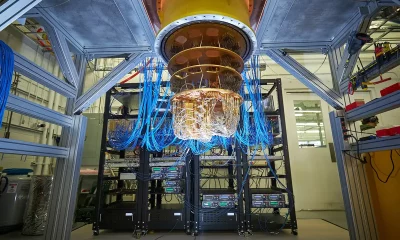When George Avetisov was the founder and CEO of cybersecurity startup HYPR, he spent a lot of time in the trenches with the company’s sales team. He quickly realized that regardless of how good his sales team was, they were consistently pulling in other departments to answer customer questions or fill out technical questionnaires.
“They don’t know the answers to most questions that get asked of them,” Avetisov told TechCrunch. “They have to ask a product person, they have to pull in a sales engineer. It’s a daunting task, and these people are brilliant, like I’ve worked with some amazing sales reps, but the problem with sales is there’s no easy way for them to automate knowledge.”
Avetisov (pictured above in the center) decided that would be his next problem to solve. He left HYPR in 2021 and took a brief interlude from startups to play and beat video game Elden Ring; Avetisov said he wanted a little downtime before being all consumed by another startup. He launched his new company, 1up, in 2022.
1up is an AI-powered knowledge automation platform for sales teams that pulls information from internal company data sources and databases. Sales professionals can turn to 1up to find answers to their product or technical questions, execute requests for proposal and also use it help fill out technical questionnaires.
The company launched publicly in January 2024 and has since amassed nearly 100 customers that range from startups to large enterprise customers including WalkMe and Deliveroo. The company has been able to land a not insignificant portion of these customers through an unorthodox marketing strategy: memes.
“We run one of the biggest sales meme libraries in the community, and we get millions of impressions on LinkedIn,” Avetisov said. “People follow us just from our memes. I know it’s a little weird, but like, one out of three of our leads comes from a meme.”
Now the company is announcing a $5 million funding round led by Upfront Ventures with participation from RRE Ventures, 8-Bit Capital, and individuals like Friendster founder Jonathan Adams, among others. Upfront general partner Kobie Fuller is the lead investor and will take a seat on the company’s board.
Fuller told TechCrunch that he got a cold email from Avetisov just days after one of his portfolio companies mentioned 1up might be a good fit for Fuller’s investment thesis regarding how AI will change enterprise’s approach to knowledge. When talking about this thesis to Avetisov, Fuller said they were speaking the exact same language.
“So much of how we make investment decisions is around the founder and George, a second-time founder, saw the problem and pain point first hand,” Fuller said. “When we talk with George, he can dive in at whatever level or depth in a manor you don’t see all the time with CEOs. You can tell he’s mission driven, he has 1up tattooed on his inner wrist. He’s really, really in it; he’s incredibly scrappy.”
Since the release of ChatGPT in 2022, AI startups building for sales departments have exploded, especially when it comes to building AI tools that help customers generate sales leads and with client outreach. Companies looking to provide knowledge centers for enterprises, many of which popped up prior to 2022, started gaining momentum, too.
Avetisov isn’t deterred, though. He said that 1up provides such a different service than the AI sales lead generators that he doesn’t think 1up is competing for the same line in a company’s budget. He said that he doesn’t think companies need all-encompassing knowledge centers, but 1up’s approach is different because it solves a specific problem.
“When you talk to the enterprise, knowledge management is not a budget item. It’s not a hair on fire problem,” Avetisov said. “Our philosophy on this is that for knowledge automation to succeed and become a billion-dollar company or industry, it needs to be laser-focused on a persona and on a department.”
The next steps for 1up, now that its raised this recent funding, is to scale out the sales team. There will also be some feature upgrades, though Avetisov wasn’t ready to share the details on those quite yet.
“Sales teams get a lot of shit,” Avetisov said. “They have one of the hardest jobs in the company, and their tool set is horrible. They’ve got so many tools for prospecting and CRMs and all that stuff. But when it comes to knowledge management, they have been completely neglected. So that’s our hot take. That’s our laser focus.”
































You must be logged in to post a comment Login